Free Things to do in South Bank
You don't need to spend a fortune to enjoy a great day out sightseeing in South Bank.
What makes South Bank stand out above the rest of central London is the amount of green and outdoor spaces that populate this small area of the capital. From the tree-lined Queen's Walk, to secret gardens, outdoor markets and graffiti tunnels. Here are ten ways to spend your time in South Bank on a beautiful day.
Located at the foot of the majestic lastminute.com London Eye, Jubilee Gardens is a landscaped park where visitors can relax and take in the riverside views. Once the site of a huge car park for employees at County Hall (back when it was the Greater London Council HQ), it's a testament to the area's commitment to supplying Central London with more beautiful green spaces instead.
Now maintained by a charitable trust which helps ensure that the many flower beds burst into full bloom come springtime, the gardens are home to a beautiful array of trees and flowers, and a brilliant adventure playground.
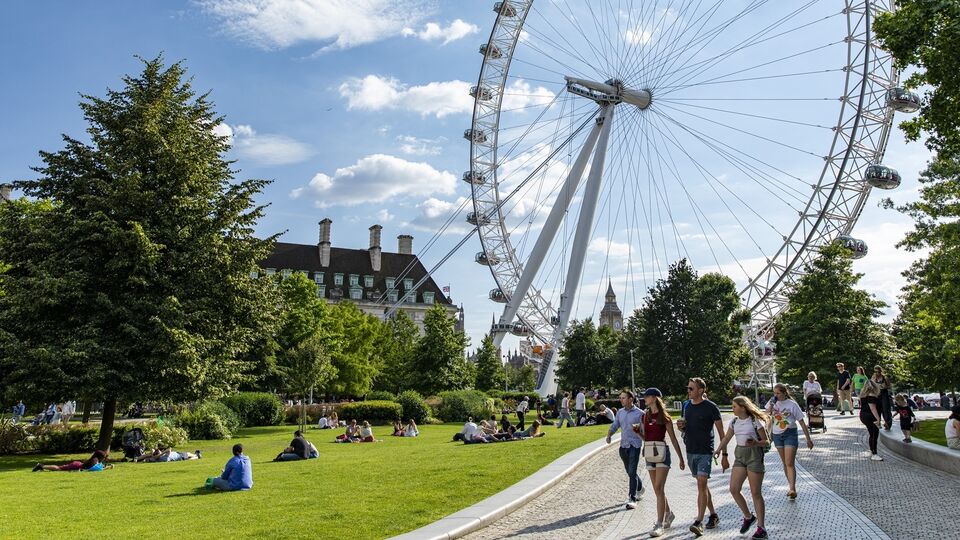
Discover an urban oasis on the rooftop of Southbank Centre's Queen Elizabeth Hall. In the ten years since it opened, this peaceful space has become a much-loved feature of the South Bank, especially in the height of summer. Home to over 200 wild native plants, a luscious lawn, views across London and a small cafe-bar counter that serves drinks and snacks, it is an ideal spot to lose yourself in a great book, or to meet up with friends before heading to a show.
The garden, originally a partnership with the Eden Project, was built and continues to be maintained by volunteers from Grounded EcoTherapy, a group that offers people dealing with issues like homelessness and addiction support and healing through working in horticulture.
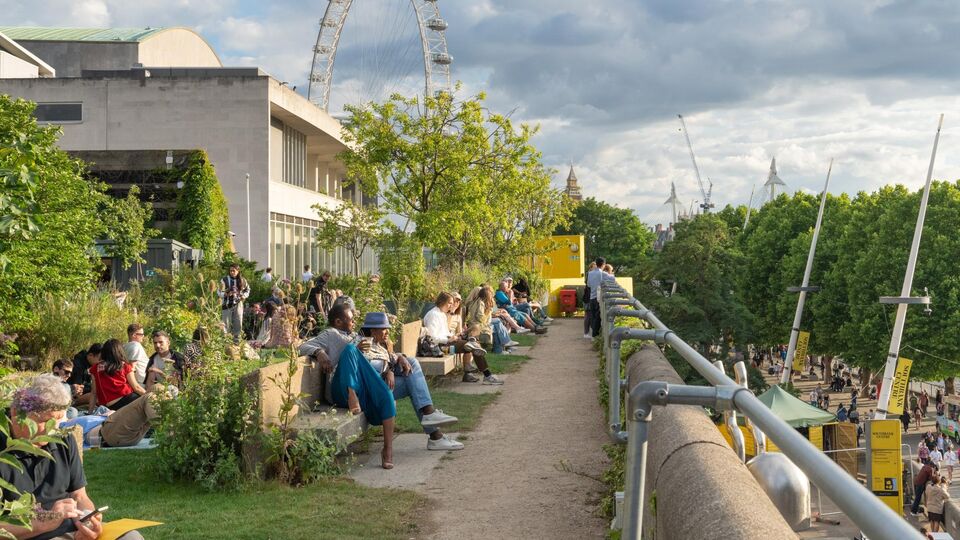
South Bank’s largest but perhaps least known park is tucked away between the St Thomas Hospital and the Lambeth Palace, less than 10 minutes walk from the London Eye. Sitting on what was once part of Lambeth Palace, the London home of the Archbishop of Canterbury, in 1901 this section of the Palace's extensive grounds opened as a public park.
In addition to a small community garden, lawns, pathways, mature trees and whimsical public art pieces, the park boasts an excellent children's playground, as well as ping pong tables (don't forget to bring your own bats and balls). There are also tennis courts available for hire if you fancy a match and five-a-side football pitches used by local schools and community groups.

The St Thomas Hospital's riverside gardens are used by both members of the public and by workers, patients and visitors to the hospital. The most prominent feature is the modernist Gabo Fountain designed by Russian Constructivist sculptor Naum Gabo (1890-1977) that looks out directly onto Big Ben on the other side of Westminster Bridge. If you are looking for incredible views of the Houses of Parliament minus the crowds, this is the spot! Surrounding the fountains are bounteous rose gardens that make for a particularly colourful sight in the summer while elsewhere wildflower planting attracts plenty of birds and bees.
In 2016 a memorial statue of Mary Seacole, the pioneering British-Jamaican nurse, was unveiled in the gardens, the UK’s first such statue erected in honour of a named black woman.
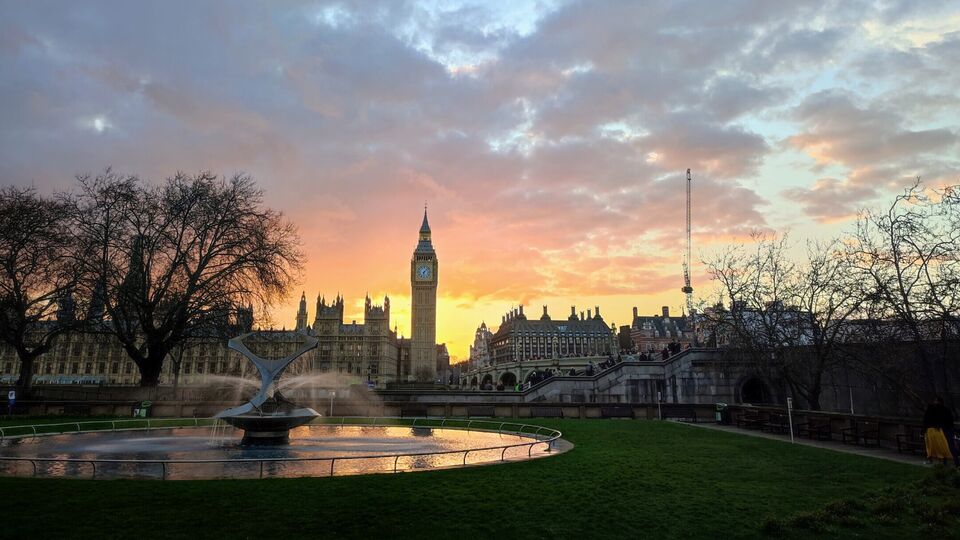
Tucked between the Art Deco Oxo Tower and the Gabriel's Wharf courtyard, Bernie Spain Gardens is an oasis of green by the riverside. The gardens were established in 1984 on what was once a derelict site of wasteland that had been earmarked for commercial development. They are named after Bernadette Spain, a Waterloo resident who helped lead a campaign that opposed plans for a new office development that would cut off access to the river, presenting instead an alternative community-led vision for the area.
The group successfully fought off the developers and today the Coin Street Community Builders' land includes affordable cooperative housing, a vibrant community centre, a rich diversity of independent businesses and this beautiful park, one of the most beautiful in the area. Pollinator gardens and flowerbeds filled with pollen-rich flora bring plenty of colour to the 13-acre gardens, complemented by a variety of trees and broad green lawns that look out towards the river
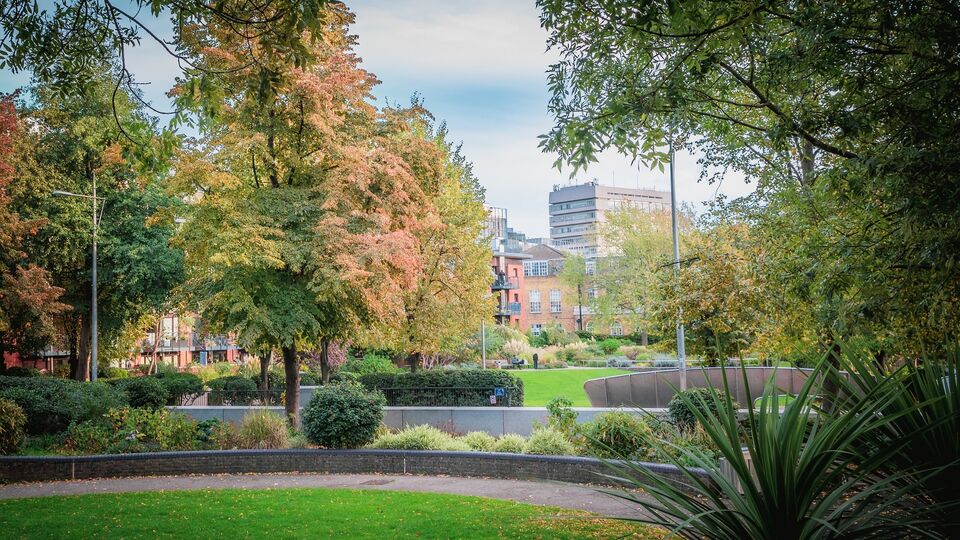
The beautiful churchyard gardens at St John's church opposite Waterloo Station are a hidden gem. In 1877 the graveyard surrounding the church was transformed into a small ‘country garden’ as part of a campaign led by National Trust co-founder Octavia Hill to provide more public green spaces for the urban poor. Today it remains a serene green space that is particularly beautiful in spring and summer when the abundant flower beds burst into bloom.
Acting as a soothing and healing community space, the gardens are cared for by a volunteer gardening team who work with charities that support those with special needs to gain skills in horticulture and who partner with homeless charities like St Mungo's on gardening projects. On weekdays there's also a small lunchtime street food market, ideal for picking up a bite to eat to enjoy on the lawns.
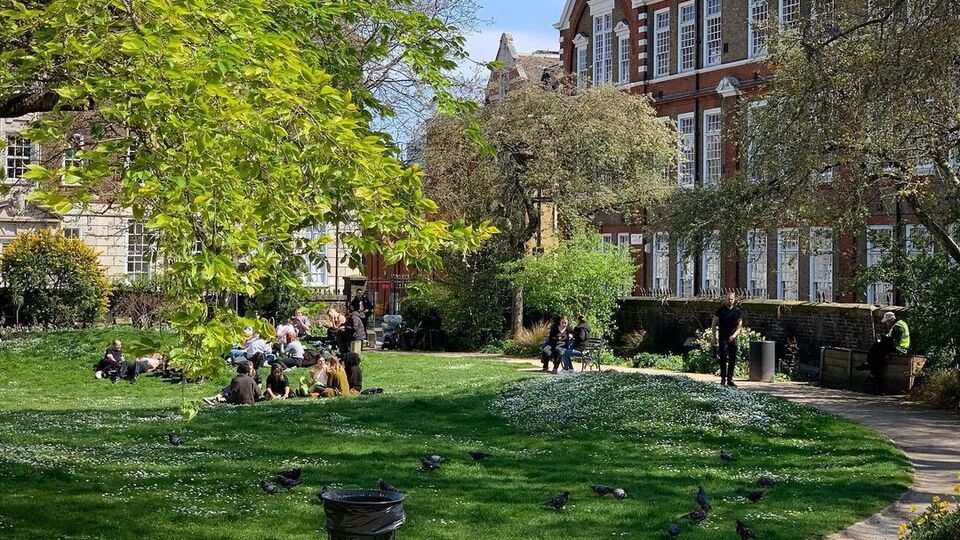
The Garden Museum explores and celebrates British gardens and gardening through its permanent collections and temporary exhibitions. Set within the former grounds of Lambeth Palace, the museum lies in the remnants of the Church of St-Mary-At-Lambeth, which dates back to at least 1062. And it wouldn't be the Garden Museum if it didn't have one of its own!
Designed by Dan Pearson as an ‘Eden’ of rare plants, the museum's courtyard garden is inspired by John Tradescant’s journeys as a plant collector. Taking advantage of the sheltered, warm space, Dan has created a green retreat in response to the bronze and glass architecture, conjuring up a calm, reflective atmosphere. Among the foliage in the courtyard garden you’ll find the tombs of the Tradescants, as well as Captain William Bligh, captain of the infamous ‘Mutiny on the Bounty’ voyage, and best of all the excellent Garden Cafe.
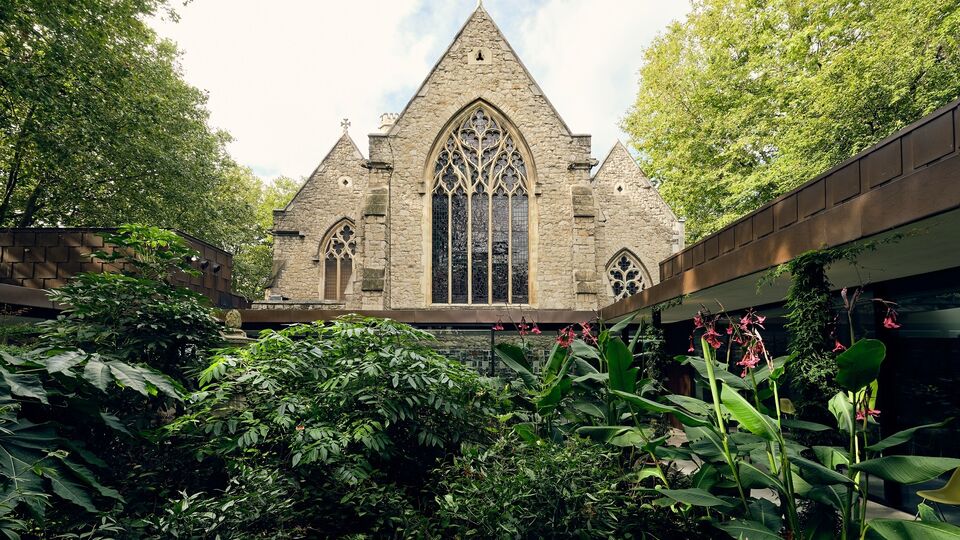
Lined with avenues of trees and the iconic sturgeon streetlamps, this fully pedestrianised path runs along a sharp bend of the Thames, meaning your views change suddenly from the Houses of Parliament to Somerset House and finally St Paul's Cathedral and beyond. On the South Bank side is the Brutalist architecture of Southbank Centre and National Theatre that this small stretch of the river is famous for before you end at the quirky art deco Oxo Tower.
During the summer, the Queen’s Walk comes alive with street food pop-ups and buskers as Londoners and tourists alike soak up the sun. Then from November to January the Southbank Centre Winter Market and beautiful illuminations turn Queen’s Walk into a winter wonderland that’s one of the capital's most popular festive attractions. Along the way there are gardens big and small including the gardens at the Garden Museum, St Thomas Hospital, Jubilee Gardens and Bernie Spain gardens, as well as landscaped 'pocket parks' around the Southbank Centre and Gabriel's Wharf.
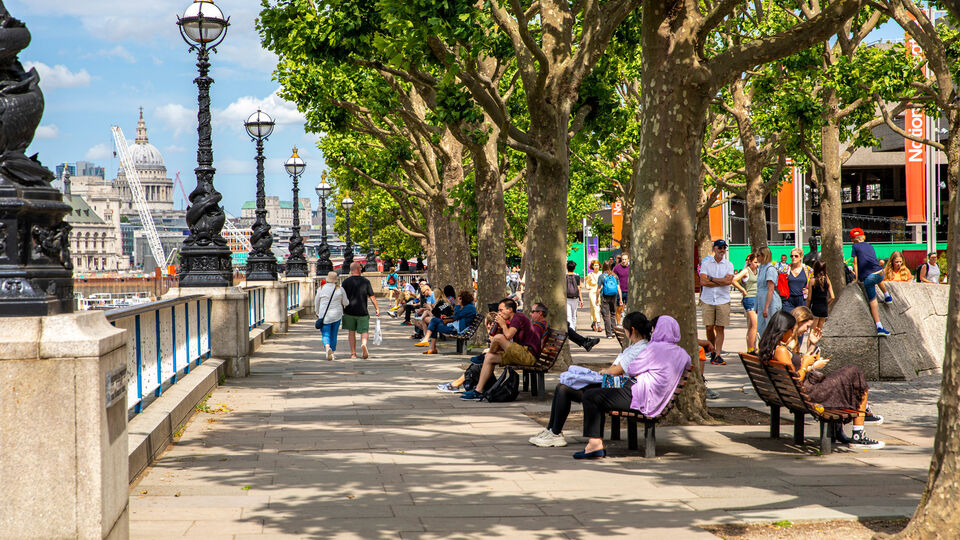
The jewel in South Bank's crown may just be the tidal beach on the edge of Oxo Tower and Gabriel's Wharf. When the tide is out, the Thames reveals a publicly accessible golden, sandy beach. Whether admiring from Observation Point for views across to St Pauls and Oxo Tower on a blue sky day or on the beach itself, it's certainly one of the most picturesque spots in South Bank.
Popular with dog walkers and anyone else looking to escape the hustle and bustle of Central London, this stretch of foreshore is truly unique. The beach was named after local resident John 'Ernie' Hearn, who campaigned for the recognition of the Thames as an asset and amenity of London and against the reclamation of the foreshore by property developments. This stunning beach certainly is a fitting tribute!
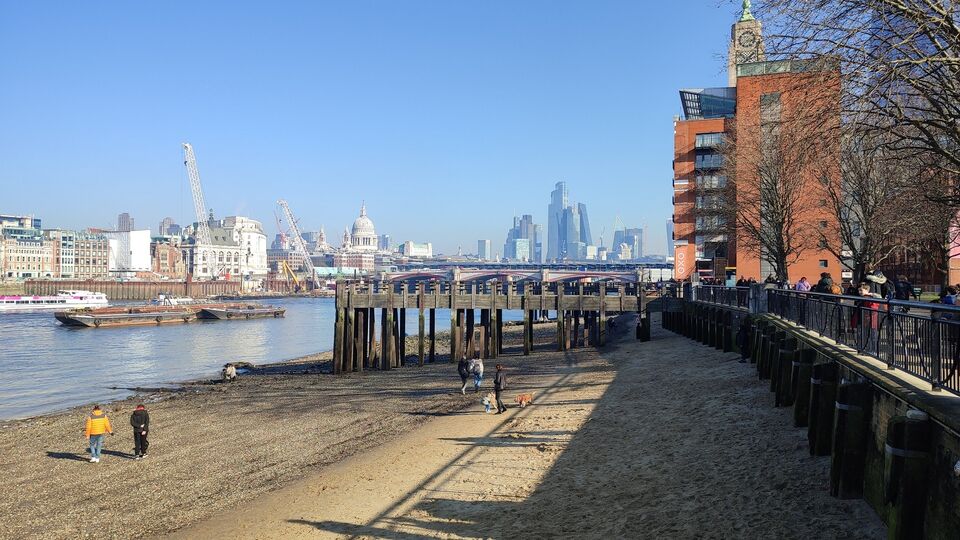
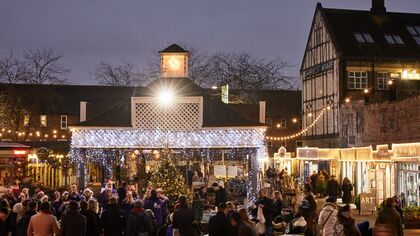
You don't need to spend a fortune to enjoy a great day out sightseeing in South Bank.